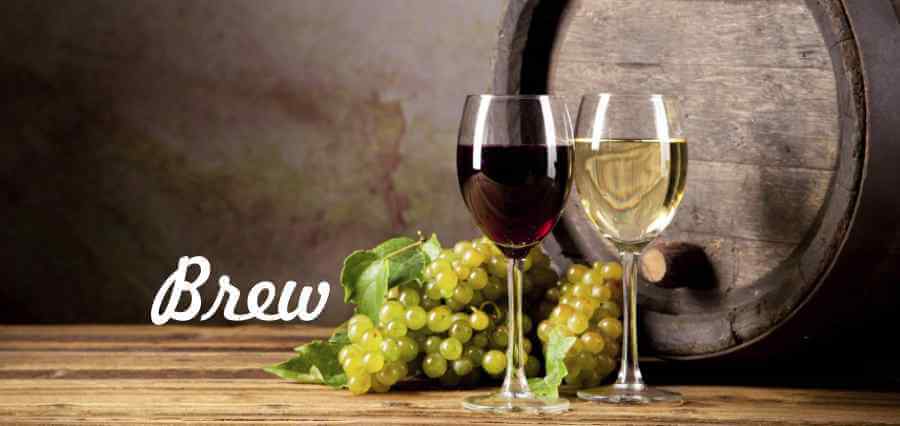Wine making is an art and so is tasting, from ancient ages brewing and tasting wine, is considered to be a privilege. The elite class feel of tasting exotic wines can be summed up with three words; “Smell, Swirl and Sip.” On the part of brewing, often a wine maker’s touch is considered to be a divine touch which can greatly affect the resulting flavor and aroma of the wine.
Grapes are considered to be the heart and soul of wine making, besides the quality of grapes, aging also plays an important role in bringing out the best quality wine. The oak barrel aging process is considered to be the most authentic process of wine making.
The first and foremost thing which comes to our mind when we hear the word “Wine” is ‒ Red wine or White wine?
Though both red wines and white wines contain the same acids, tannins, glycerine and alcohol, the biggest difference is in the way they are made. The white wines are generally made with the light colored grapes and only grape juice is used to ferment and extract alcohol from them. But in case of red wine darker grapes are used with a huge amount of pigment still present in them, generally for making red wine grapes are often crushed with their stems still intact with them, the grapes are fermented with huge chunks of grapes matter and skin, later they are removed after fermentation. As a result two different wines are produced, the white wine with crystal clear transparent texture and tangy aroma, and for red wine it is dark and heavy in texture and have fruity aroma.
Let’s focus on some of the terms, so next time you plan to visit a winery it would be easy to understand the wine maker’s goals and the different styles of brewing wine before you taste them.
Harvesting
Sensing the right time to pick up the grapes is considered to be a big deal. The moment the grapes are picked, they decide the quality of wine to be made. Picking up earlier tend to produce wines with higher acidity and lower alcohol giving out green flavours and acidic aromas and may also produce bitter tannin. Where as picking up later in the season tends to produce wines with much lower acidity and higher alcohol and more subtle tannin. A cooler climate with no rain, produces the best grapes with the perfect balance of acidity and alcohol.
Choosing the Right Fermentation Technique
Choosing the right fermentation temperature is an important technique which plays a crucial role in developing the flavours, colour and aroma in a wine. There are two techniques namely:
Hot Fermentation: In hot fermentation the temperature can go up to 80 – 100 °F, where yeast metabolizes to produce alcohol. Warmer fermentations are significantly used for red wines for increased color and tannin.
Cool Fermentation: Cooler fermentation technique is generally practiced for producing white and rose wines in cooler temperatures 42 – 50 °F, which help to lock the delicate aromas of white wines. Delicate aromas are volatile in nature and at high temperature reaction happen faster and they evaporate. This is probably the main reason to opt for cool fermentation for producing white wines.
Wine Aging
As the saying goes, “Wine gets better with age” so, aging plays a vital role in determining the quality of wine.
Oak aging is one of the most famous ways of traditionally aging of wine. It’s a myth that oak only adds vanilla flavor to the wine, rather it increases the wine’s exposure to oxygen during the aging process. Oxygen helps in decreasing tanning and help the wine to reach its optimal fruit quotient. Wines aged for several years in oak barrel develop woody, piney and subtle aromatic flavor and gives the ultimate richness to its taste.
Another modern and easy way of fermenting wine is through the usage of steel tanks. Steel tanks are handy and are user friendly. Steel tanks limit the oxygen exposure to wine and keeps the wine fresh for a longer time.
Bottling
While buying a wine bottle, a customer often goes through a dilemma, whether to buy a bottle with screw cap, or a bottle with cork stopper?
Cork stoppers gives more authentic and rustic feel, but they have their demerits too. Being porous in nature, corks allow unpredictable amounts of oxygen into the bottle which affects the taste and flavor of the wine. Where as screw caps are more practical and doesn’t allow oxygen to affect the wine inside the bottle.
Wine making is all about passion, so covering everything in one article is quite impossible. So this insight would put some light on making wine rather than defining it fully.


